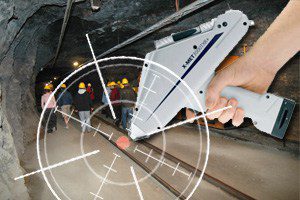
Hand-held devices that can detect and measure the presence of lead contamination in soil are helping environmental researchers identify “hot spots” where contamination is highest and children should avoid to prevent serious health problems. According to a New York Times report on a new study from Columbia University, use of an X-ray fluorescence scanner (XRF gun) […]
 Hand-held devices that can detect and measure the presence of lead contamination in soil are helping environmental researchers identify “hot spots” where contamination is highest and children should avoid to prevent serious health problems.
Hand-held devices that can detect and measure the presence of lead contamination in soil are helping environmental researchers identify “hot spots” where contamination is highest and children should avoid to prevent serious health problems.
According to a New York Times report on a new study from Columbia University, use of an X-ray fluorescence scanner (XRF gun) can detect and measure the amount of lead in soil within a minute. In Cerro de Pasco, Peru, a small mining town in the Andes Mountains, these XRF guns are being used to identify areas in the soil that are contaminated with high levels of lead.
The children of Cerro de Pasco have begun to develop signs of brain damage likely caused by lead poisoning. Children of this town and other mining villages likely acquire lead poisoning when they play in areas where the soil is contaminated. These scanners can detect those dangerous areas and help local officials prohibit children or anyone from going near areas that are contaminated. If children are playing near soil that’s contaminated, it touches their hands and they put their hands in their mouths, they’re exposing themselves to high levels of lead and the potential exists for serious health complications as a result.
What may cause more trouble is that the scanners are showing lead contamination can be hit-and-miss in the soil, tainting one backyard but not another next door. The report indicates levels of lead detected in that one Peruvian town show that samples collected as short as 100 yards apart. Levels of lead were found in schoolyards and playgrounds and could be in other locations where children gather.
Lead dust can be produced in various forms of mining and is common in Latin and South America, as well as Africa, according to the report. Lead is also produced in mining operations for gold, silver, copper, and other metals. The study using the XRF guns determined these devices would be useful for any residents living near mining operations or smelters to be vigilant against the threat of lead contamination. Each device costs between $15,000 and $40,000.
Lead can also contaminate the air and water near towns where these mining operations are located. Thousands of people in the U.S. are exposed to dangerous contaminants like lead everyday through their surrounding environments, living near industrial and mining operations here.


